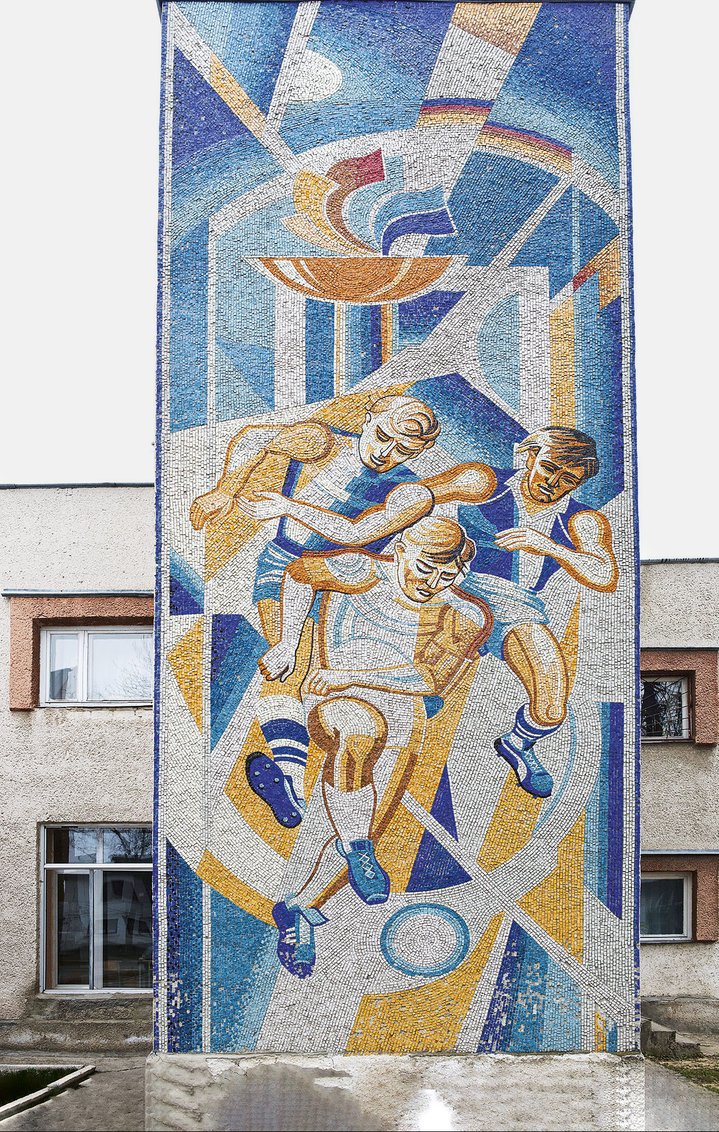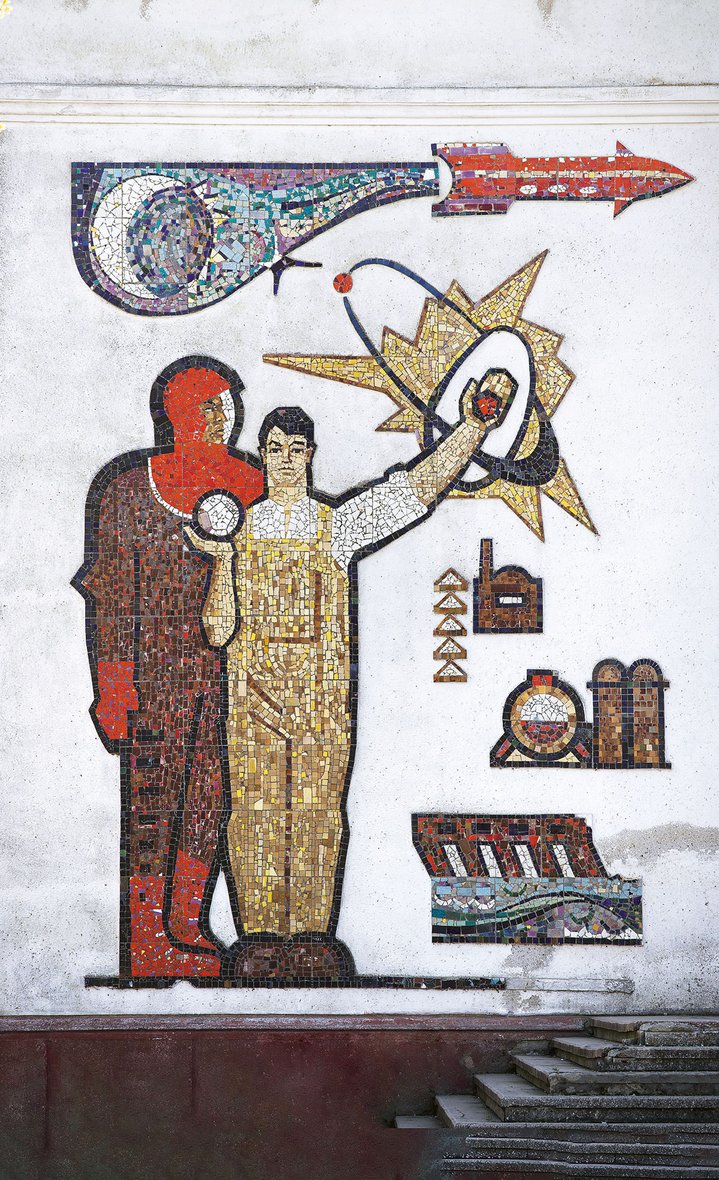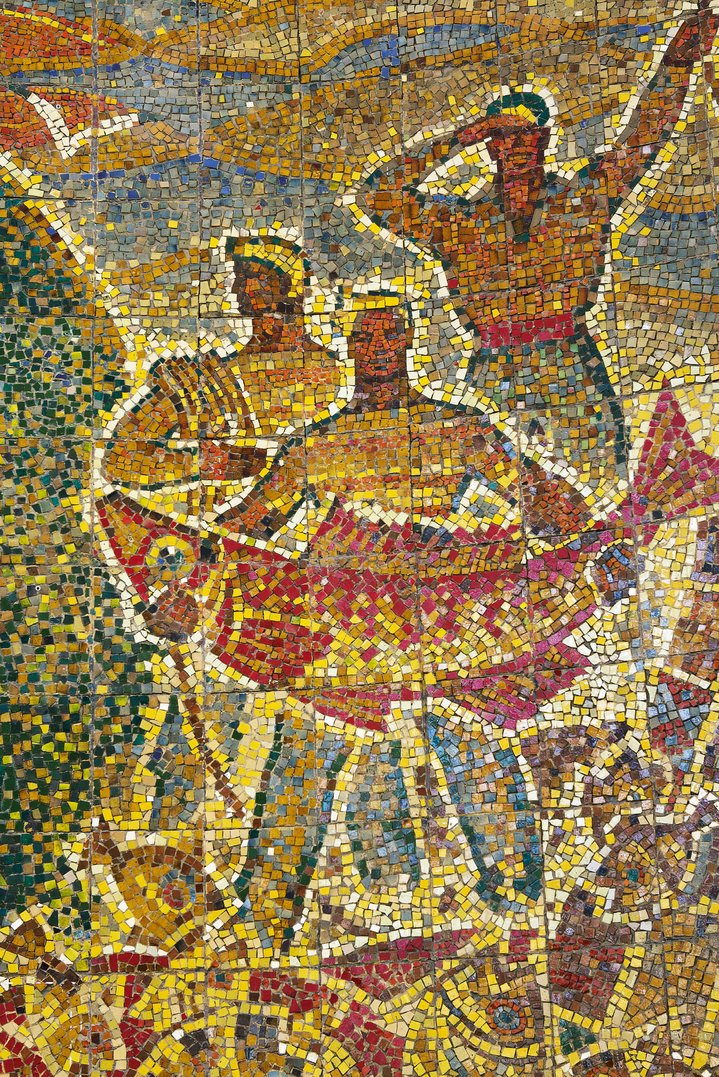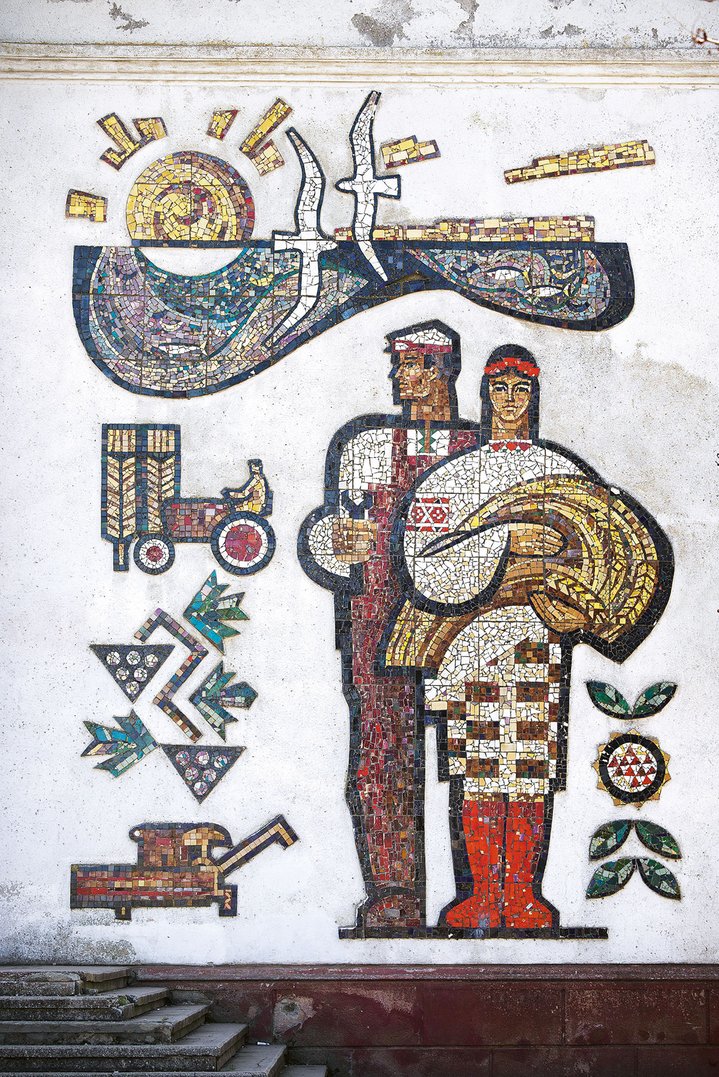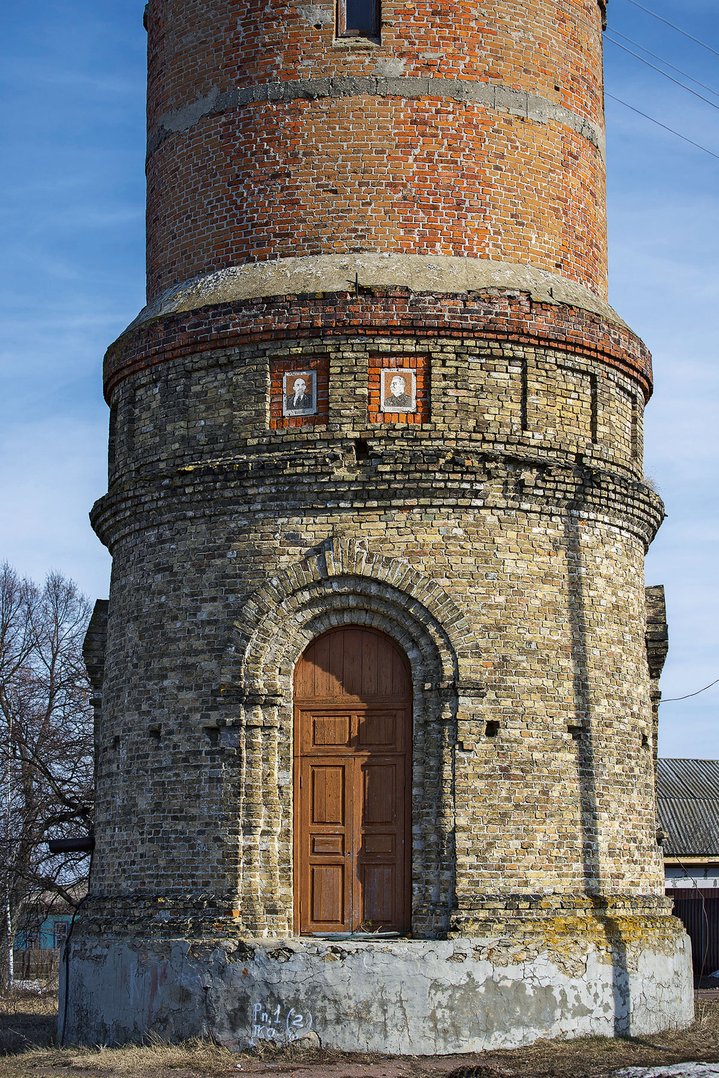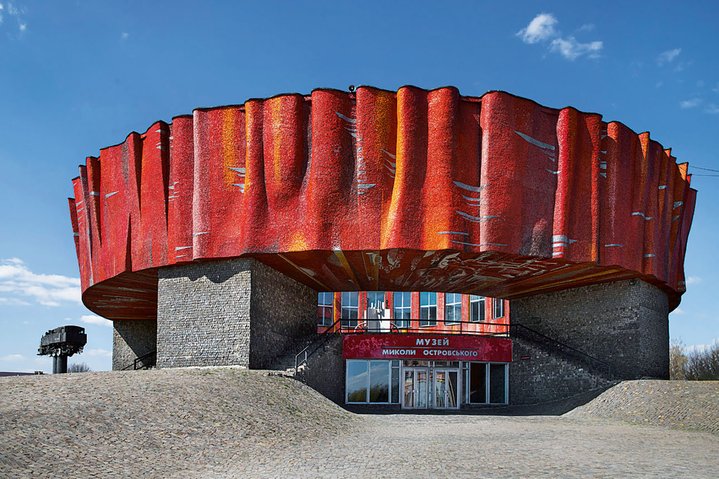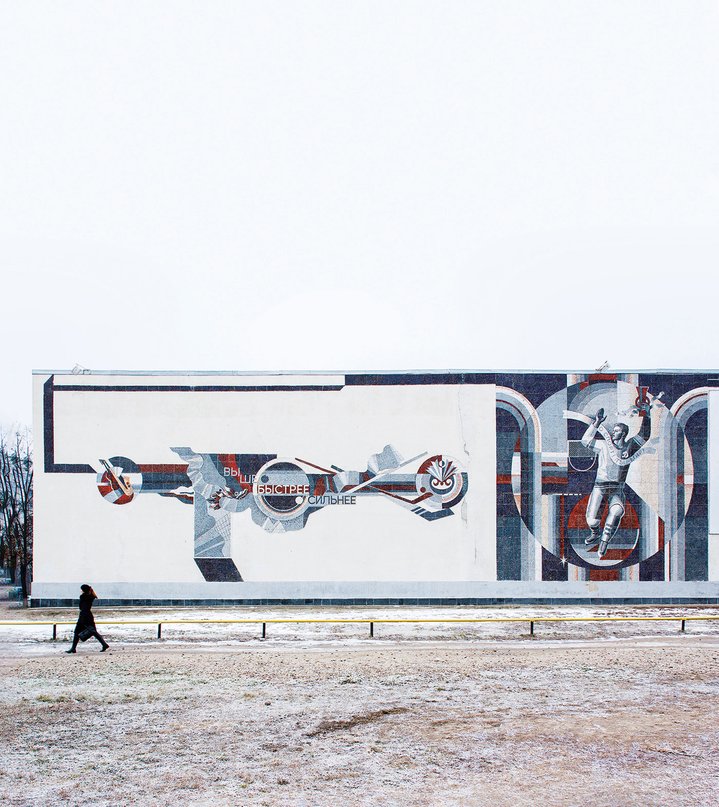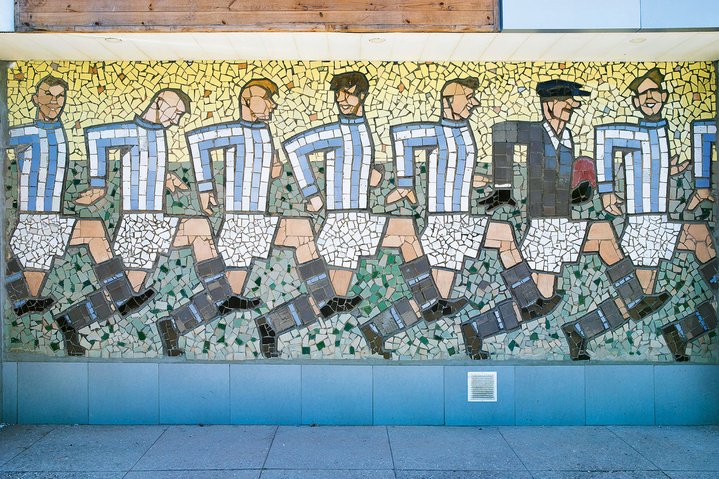Mykola Ostrovsky Regional Literary Memorial Museum. 2 Ostrovskoho Street, Shepetivka. Architect: Anatolii Ihnashchenko. Artist: Anatolii Haidamaka, with team of approximately 80 executors, 1979. Smalt mosaic, relief, stainless steel elements
Yevgen Nikiforov: a photographer in quest of Soviet mosaics
The Kiev photographer Yevgen Nikiforov (b. 1986) has over the last seven years been documenting Soviet-era mosaics all over Ukraine.

Nikiforov was born in 1986 in Vasylkiv, in the Kiev region of Ukraine and is currently based in the country’s capital. He started his career as a photographer in 2005. Since 2013, he has been working on various independent documentary projects. His works have been shown at exhibitions in Austria, Canada, France, Germany and Israel, as well his native country.
Photo: Alexander Nazarov/Gromadske
What makes this photographer’s efforts urgent is Ukraine’s process of “de-communization”, a state-run project aimed at getting rid of all remaining Сommunist symbols, which was launched by the Ukrainian government after the revolution of 2014. The highly colourful ceramics Soviet officials and architects so much liked to decorate everything from grand official halls to humble village bus stops are particularly vulnerable, because they were never officially registered as works of art in Soviet times, something that could have protected them now. “The search for monumental art for me is a way to delve into the history of art of the second half of the 20th century. Monumental works are inextricably linked with the practice of those artists, whose works are present in almost every Ukranian art museum,” is how Nikiforov expresses it, stressing that “Soviet Ukraine’s art is an integral part of international art history”.
Soviet monumental art peaked as a propaganda instrument from 1960 to the collapse of Communist rule in 1990. A reaction then followed and those bright and heroic works were later despised as ideological symbols that had lost their teeth. The photographer, who began his search in 2013, has since then identified over 5,000 monumental Soviet era works during his artistic pilgrimages throughout Ukraine.
“Now I am interested not so much in Soviet modernism per se, but rather in how it has transformed itself over recent years, how it affects everyday life, how the landscape changes chaotically and how modernism remains just a background,” Nikiforov commented. “As for mosaics, I find the most interesting period of all to have been that of the 1960s and 1970s. As for my favourite artists I particularly like the work done by Galina Zubchenko and Grigory Prishedko, as well both the individual and collective works created by Ivan Litovchenko. Ernest Kotkov, Valery Lamakh, Alla Gorskaya and Viktor Zaretsky, Stepan Kirichenko and Nadezhda Klein,” the photographer told Russian Art Focus. Nikiforov says he is particularly drawn to architecture and monumental art that does not at first site strike one as remarkable.
For the last three years, he has been focusing on a new project dealing with an experimental Soviet project launched in the late 1950s. These were Show Villages and through them he stumbled on a new concept called the ‘Kolkhoz-Town’. The project began to be implemented in the late 1950s. “There are slightly more than 40 such experimental villages in Ukraine. I visit them and I keep wondering whether this was an architectural experiment or one that was really made on human beings,” he said.
The photographer’s latest book ‘Art for Architecture. Ukraine. Soviet Modernist Mosaics From 1960 to 1990’, published in English by Germany’s Dom publishing house, is his second book on this topic. His first album ‘Decommunized: Ukrainian Soviet Mosaics’ was published by the Kyiv publishing house Osnovy in 2017.
The texts for his latest book were written by Polina Baitsym, an emerging scholar and curator who specializes in the art of Socialist Realism. The new book about Ukraine’s mosaics is part of a series of guidebooks about monumental art that have already been published by Dom Publishers, covering Georgia and what used to be East Germany.






